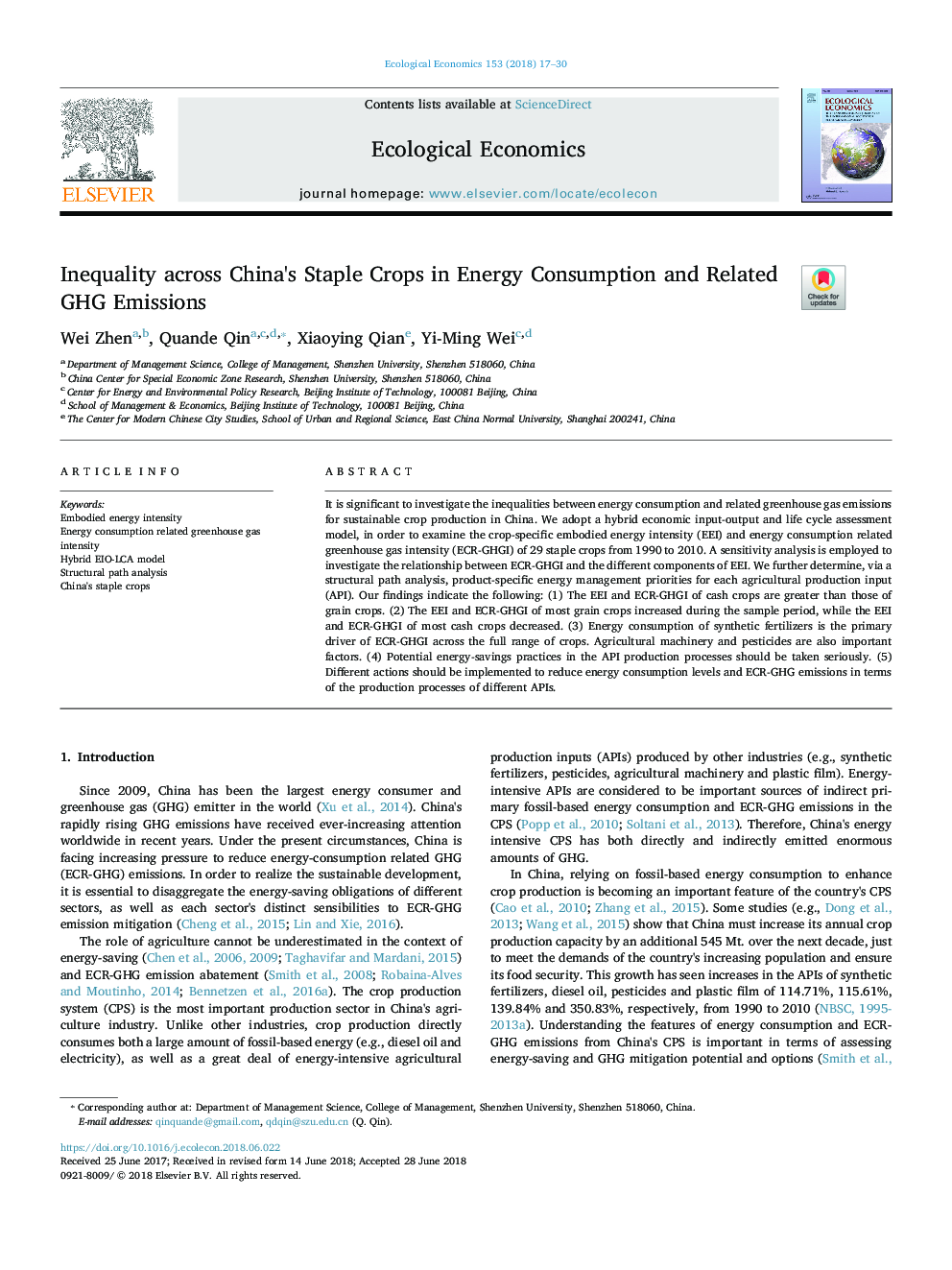| Article ID | Journal | Published Year | Pages | File Type |
|---|---|---|---|---|
| 7343805 | Ecological Economics | 2018 | 14 Pages |
Abstract
It is significant to investigate the inequalities between energy consumption and related greenhouse gas emissions for sustainable crop production in China. We adopt a hybrid economic input-output and life cycle assessment model, in order to examine the crop-specific embodied energy intensity (EEI) and energy consumption related greenhouse gas intensity (ECR-GHGI) of 29 staple crops from 1990 to 2010. A sensitivity analysis is employed to investigate the relationship between ECR-GHGI and the different components of EEI. We further determine, via a structural path analysis, product-specific energy management priorities for each agricultural production input (API). Our findings indicate the following: (1) The EEI and ECR-GHGI of cash crops are greater than those of grain crops. (2) The EEI and ECR-GHGI of most grain crops increased during the sample period, while the EEI and ECR-GHGI of most cash crops decreased. (3) Energy consumption of synthetic fertilizers is the primary driver of ECR-GHGI across the full range of crops. Agricultural machinery and pesticides are also important factors. (4) Potential energy-savings practices in the API production processes should be taken seriously. (5) Different actions should be implemented to reduce energy consumption levels and ECR-GHG emissions in terms of the production processes of different APIs.
Keywords
Related Topics
Life Sciences
Agricultural and Biological Sciences
Ecology, Evolution, Behavior and Systematics
Authors
Wei Zhen, Quande Qin, Xiaoying Qian, Yi-Ming Wei,
